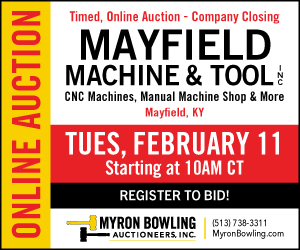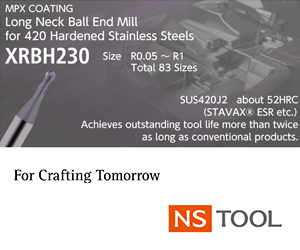 Fairport, NY: Steiner Technologies partners with German manufacturer, Hermann Bilz to fill the void left by the discontinuation of the main provider of manual back counterbore tools in North America
Fairport, NY: Steiner Technologies partners with German manufacturer, Hermann Bilz to fill the void left by the discontinuation of the main provider of manual back counterbore tools in North America
⇒ Steiner Technologies is stocking HSS manual back counterboring heads from 10mm-76mm
⇒ Offset entry back counterboring tools are also being stocked in solid carbide and indexable insert options in a wide variety of metric sizes
⇒ Modular piloted front counterboring tools available in standard metric sizes in HSS, brazed carbide, and indexable insert options
⇒ Stock items can be shipped same day as ordered up until 3 PM (EST)
⇒ The Hermann Bilz line is being offered in conjunction with the fully automatic Autofacer which is designed and built per specific application in our Fairport, NY facility
Contact Details
Related Glossary Terms
- counterbore
counterbore
Tool, guided by a pilot, that expands a hole to a certain depth.
- counterboring
counterboring
Enlarging one end of a drilled hole. The enlarged hole, which is concentric with the original hole, is flat on the bottom. Counterboring is used primarily to set bolt heads and nuts below the workpiece surface.
- high-speed steels ( HSS)
high-speed steels ( HSS)
Available in two major types: tungsten high-speed steels (designated by letter T having tungsten as the principal alloying element) and molybdenum high-speed steels (designated by letter M having molybdenum as the principal alloying element). The type T high-speed steels containing cobalt have higher wear resistance and greater red (hot) hardness, withstanding cutting temperature up to 1,100º F (590º C). The type T steels are used to fabricate metalcutting tools (milling cutters, drills, reamers and taps), woodworking tools, various types of punches and dies, ball and roller bearings. The type M steels are used for cutting tools and various types of dies.
- indexable insert
indexable insert
Replaceable tool that clamps into a tool body, drill, mill or other cutter body designed to accommodate inserts. Most inserts are made of cemented carbide. Often they are coated with a hard material. Other insert materials are ceramic, cermet, polycrystalline cubic boron nitride and polycrystalline diamond. The insert is used until dull, then indexed, or turned, to expose a fresh cutting edge. When the entire insert is dull, it is usually discarded. Some inserts can be resharpened.







